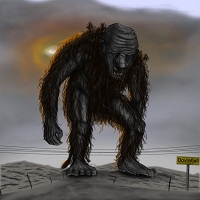
Trolls
CBUB Wins: 0
CBUB Losses: 0
CBUB Ties: 0
Win Percentage: 0%
Added by: Boratz
Read more about Trolls at: Wikipedia
Official Site: Public Domain
A troll is a supernatural being in Norse mythology and Scandinavian folklore. In origin, the term troll was a generally negative synonym for a jötunn (plural jötnar), a being in Norse mythology. In Old Norse sources, beings described as trolls dwell in isolated rocks, mountains, or caves, live together in small family units, and are rarely helpful to human beings.
Later, in Scandinavian folklore, trolls became beings in their own right, where they live far from human habitation, are not Christianized, and are considered dangerous to human beings. Depending on the region from which accounts of trolls stem, their appearance varies greatly; trolls may be ugly and slow-witted or look and behave exactly like human beings, with no particularly grotesque characteristic about them. Trolls are sometimes associated with particular landmarks, which at times may be explained as formed from a troll exposed to sunlight. One of the most famous elements of Scandinavian folklore, trolls are depicted in a variety of media in modern popular culture.
In Norse mythology, troll, like thurs is a term applied to jötnar, and are mentioned throughout the Old Norse corpus. In Old Norse sources, trolls are said to dwell in isolated mountains, rocks, and caves, sometimes live together (usually as father-and-daughter or mother-and-son), and are rarely described as helpful or friendly. In the Prose Edda book Skáldskaparmál, a scenario describing an encounter between an unnamed troll woman and the 9th century skald Bragi Boddason is provided. According to the section, once, late in the evening, Bragi was driving through "a certain forest" when a troll woman aggressively asked him who he was, in the process describing herself:
Bragi responds in turn, describing himself and his abilities as a skillful skald, before the scenario ends.
CBUB Match Record:
No Regular Play Records Available
No Fantasy Draft Records Available
